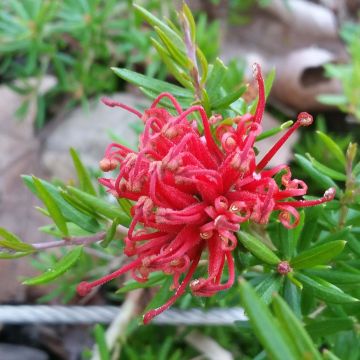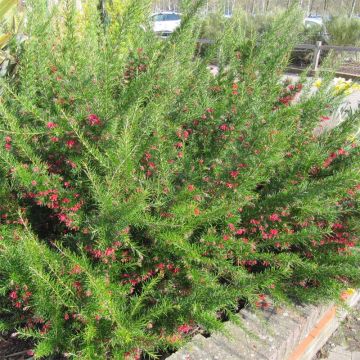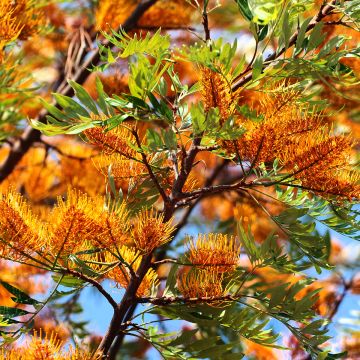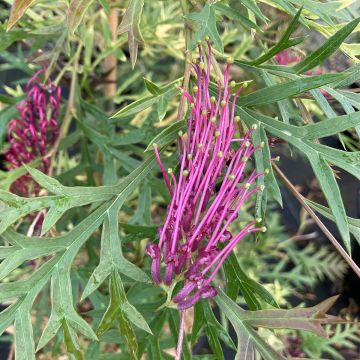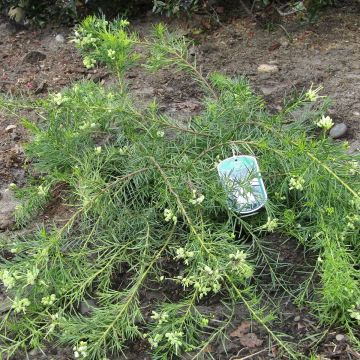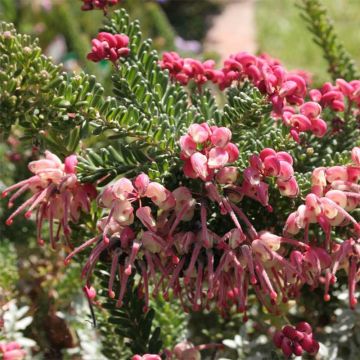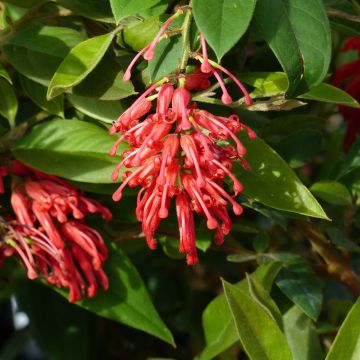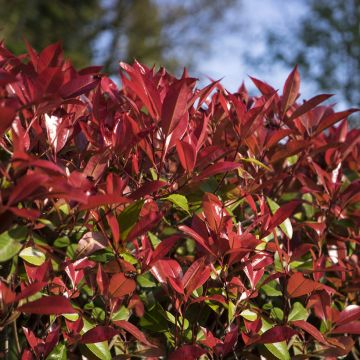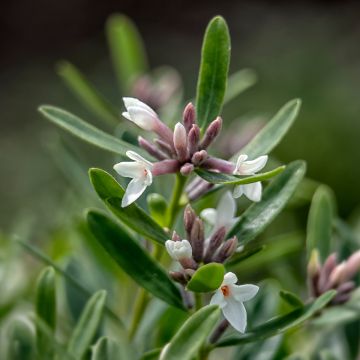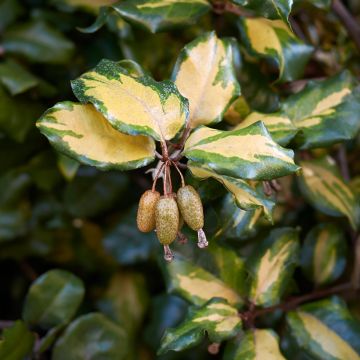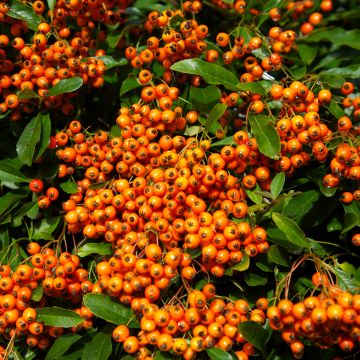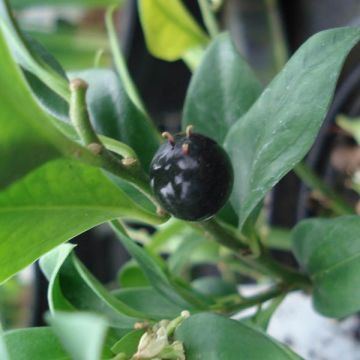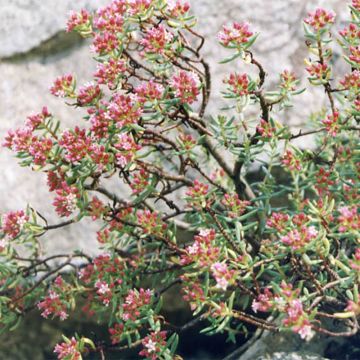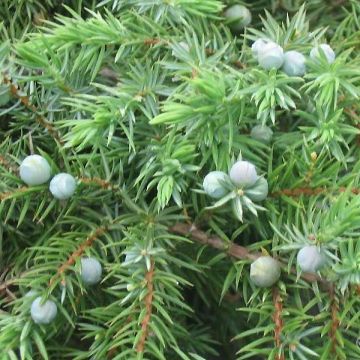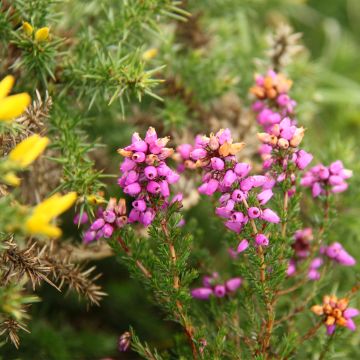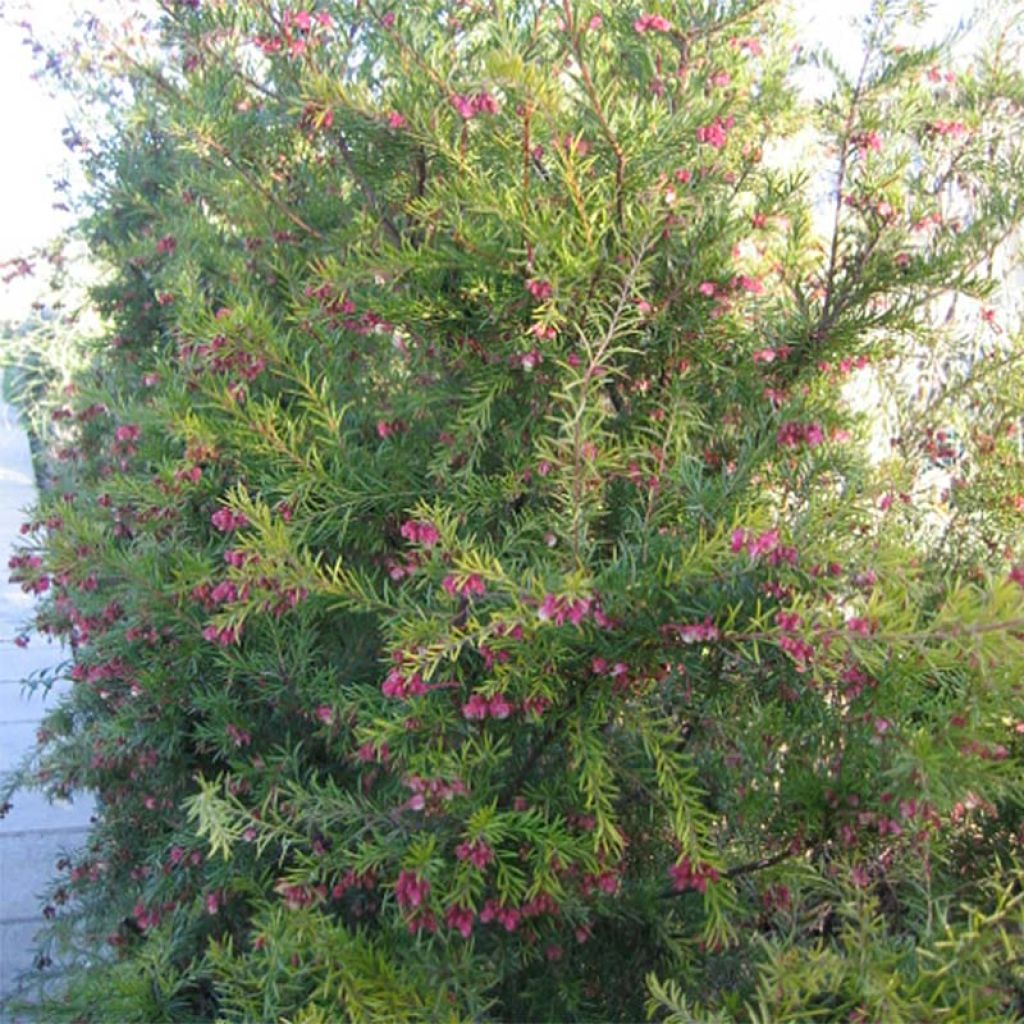

Grevillea rosmarinifolia Rosa Jenkinsii
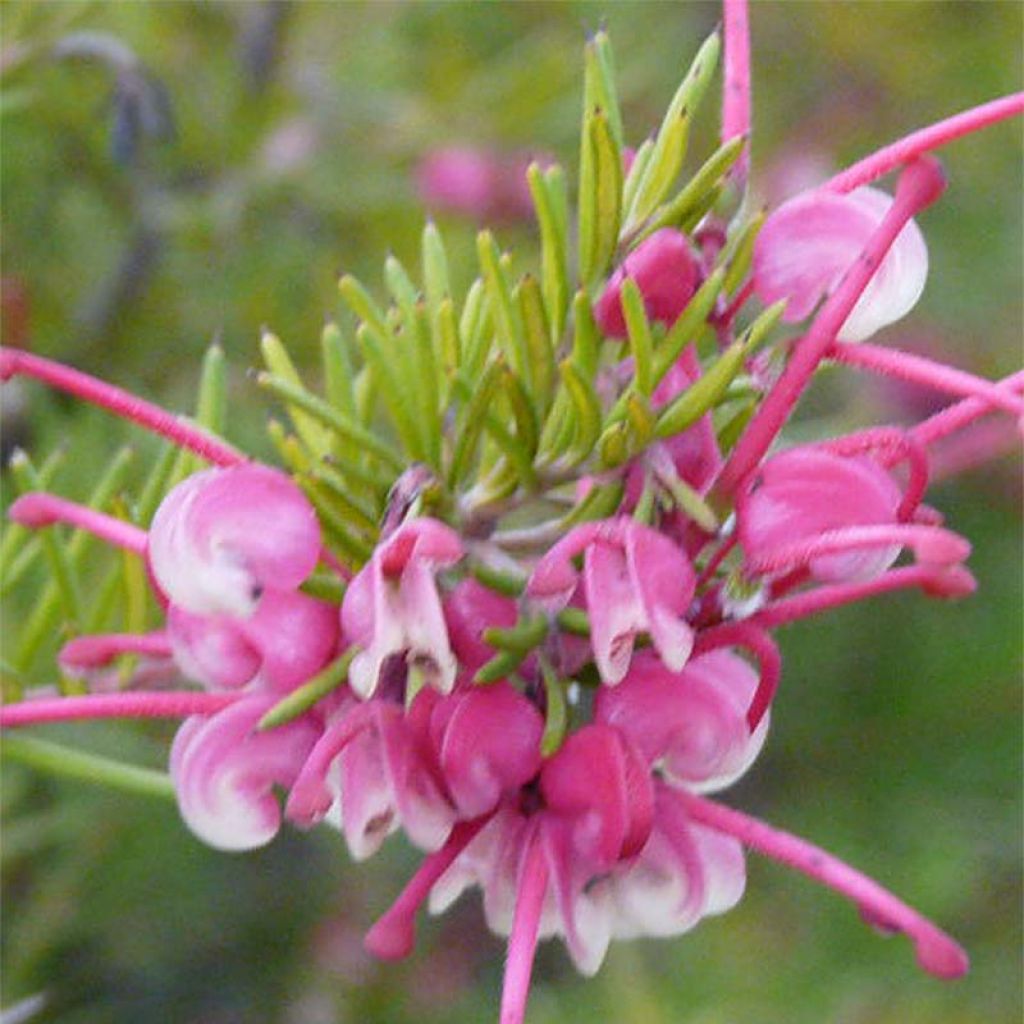

Grevillea rosmarinifolia Rosa Jenkinsii
Grevillea rosmarinifolia Rosa Jenkinsii
Grevillea rosmarinifolia Rosa Jenkinsii
Rosemary Grevillea, Spider Flower
Special offer!
Receive a €20 voucher for any order over €90 (excluding delivery costs, credit notes, and plastic-free options)!
1- Add your favorite plants to your cart.
2- Once you have reached €90, confirm your order (you can even choose the delivery date!).
3- As soon as your order is shipped, you will receive an email containing your voucher code, valid for 3 months (90 days).
Your voucher is unique and can only be used once, for any order with a minimum value of €20, excluding delivery costs.
Can be combined with other current offers, non-divisible and non-refundable.
Home or relay delivery (depending on size and destination)
Schedule delivery date,
and select date in basket
This plant carries a 24 months recovery warranty
More information
We guarantee the quality of our plants for a full growing cycle, and will replace at our expense any plant that fails to recover under normal climatic and planting conditions.
Would this plant suit my garden?
Set up your Plantfit profile →
Description
Grevillea rosmarinifolia 'Rosa Jenkinsii' is a compact variety of grevillea with rosemary-like leaves, featuring slightly trailing branches covered in very ornamental light green foliage throughout the year. It blooms early in spring, with short clusters of small bright pink spider-like flowers. This evergreen bush is both disease-resistant and tolerant of drought and cold, down to -10°C (14 °F) in well-drained soil. Excellent for coastal hedges, mixed shrub borders and large dry slopes, it also adapts well to container gardening.
Grevillea rosmarinifolia is a bush belonging to the protea family, native to the cooler regions of southeastern Australia. Many Grevillea species are pioneers in their natural environment: they tolerate fairly poor dry soils but do not like limestone, and require full sun to flower. 'Rosa Jenkinsii' is a more modest cultivar, slightly less spiky than its parent, offering mainly springtime pink flowering. It grows rapidly, reaching its mature size in 3 or 4 years, with a rounded habit that averages about 1.3 metres (4 feet 4 inches) in all directions. It develops thin ascending branches, forming a dense and somewhat bushy mass. Its small narrow and pointed leaves do not exceed 1.5 to 3 cm (0.6 to 1.2 in) in length. They are smooth, hairy on the underside, and bright light green. The very decorative flower buds form from late autumn. The flowering "explodes" from March and continues until May, without interruption. It can also reoccur in September in mild climates, if the soil remains somewhat moist in summer. The bright pink petal-less flowers are composed of petal-shaped styles rolled upon themselves and long recurved stamens. They are grouped in short spider-like clusters. The root system of this plant is very dense near the surface, which results in adaptation to nutrient-poor soils and summer drought.
The Grevillea rosmarinifolia 'Rosa Jenkinsii' is fairly resistant to sea spray, requires little maintenance and no watering once established, and tolerates light pruning to maintain density. It will easily thrive in coastal gardens as well as deeper inland, in sheltered positions and preferably in light, well-draining, slightly acidic soil. It will blend well with evergreen ceanothus in dense hedges, flowering over a long period. It will also make a good impression when planted alone on large slopes or in the back of dry gardens, always in an open position, in full sun. In an exotic or Mediterranean garden, it can be combined with proteas, Agave, Caesalpinia gilliesii, Sesbania punicea, Aloe aristata, Leucophyllum frutescens, as well as Callistemon and Leptospermum. Container gardening allows both control of the substrate composition and overwintering the bush in a cold greenhouse or a very bright and minimally heated conservatory in cold regions.
Report an error about the product description
Grevillea rosmarinifolia Rosa Jenkinsii in pictures
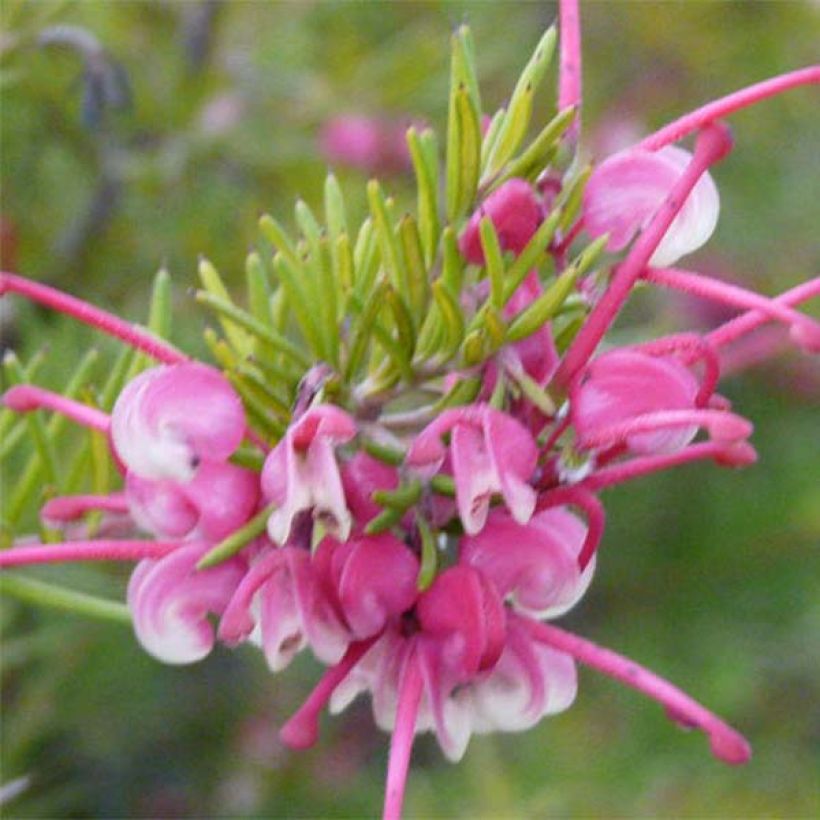

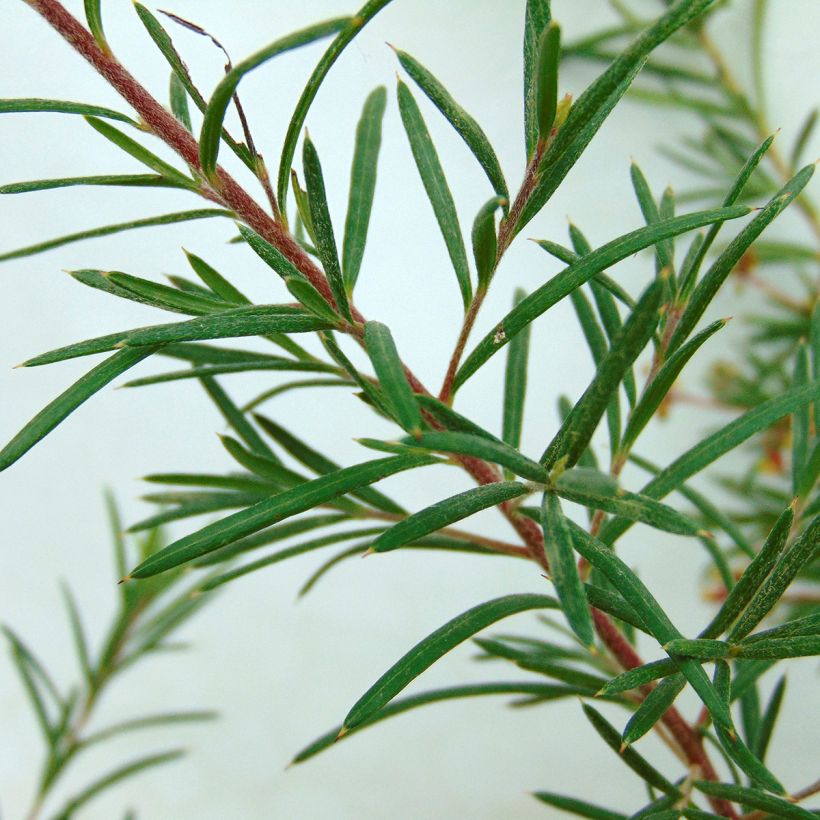

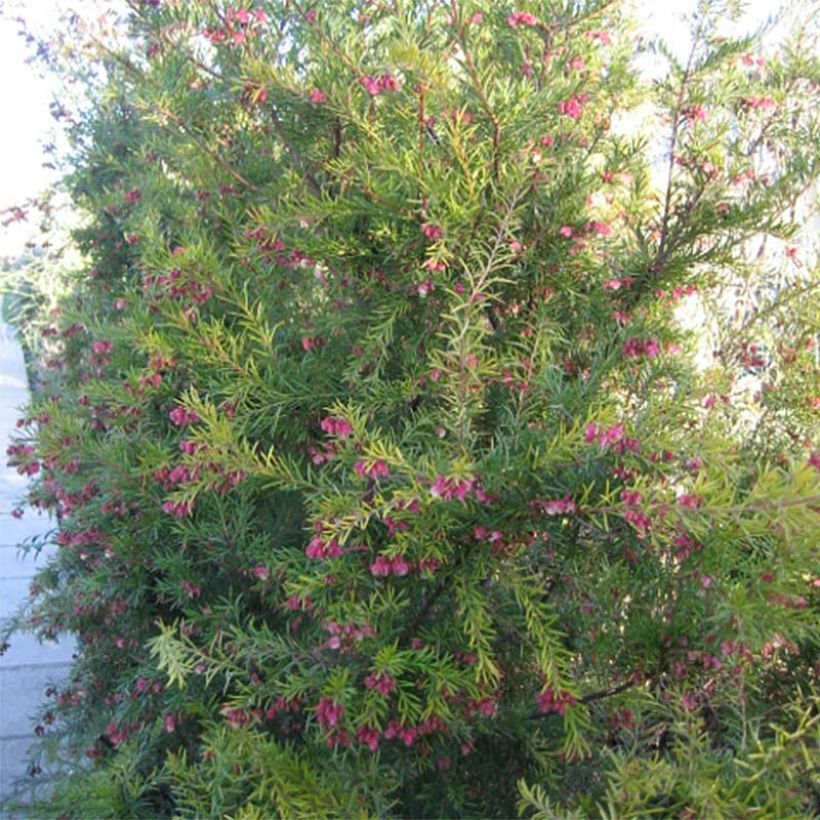

Plant habit
Flowering
Foliage
Botanical data
Grevillea
rosmarinifolia
Rosa Jenkinsii
Proteaceae
Rosemary Grevillea, Spider Flower
Cultivar or hybrid
Other Grevillea
View all →Planting and care
Grevillea 'Rosa Jenkinsii' is best planted in spring, after the last frosts. It prefers soil with a pH ranging from acidic to neutral, sandy, loamy, poor, and very well-drained. The presence of limestone in the soil causes yellowing of the foliage, chlorosis, which weakens the bush until it eventually dies. This disease can be corrected with regular iron supplements. In regions where the soil and subsoil are limestone, dig a large hole of 60 cm (23.6 in) in all directions, filled with ericaceous soil or compost and non-limestone sand. Growing in a pot allows better control of the substrate and protects the plant from frost in areas with borderline hardiness (down to -9/-10°C (15.8/14 °F) for a well-established plant).
Grevilleas are drought-resistant once well established: monitor watering during the first 2 summers but this will become optional or even unnecessary later on. In the ground, they appreciate a thick layer of mulch. Use wood chips or grass clippings. It is recommended to use a fertilizer very in low phosphorus as it decrease the bush's drought resistance by destroying the thick root hairs that develop just below the soil surface. A fertilizer with N-P-K proportions of 18-2-10 is well-suited.
Olant Grevillea species and varieties with low growth in pots. Use a lightweight, well-drained potting mix that remains moist. We recommend the following mixture: 60% pine bark, 20% coarse river sand, 10% fine river sand, and 10% clay soil for its water retention capacity. The pH should be 7 or less.
Insects and diseases:
Grevilleas can develop black leaf spots, caused by a rarely fatal fungus: it can be treated with a fungicidal treatment.
Collar rot, a fatal disease caused by fungi that develop in wet and warm soil, is also a risk. Avoid burying the plant's collar, which will allow for better air circulation. Avoid watering too often during hot and dry weather, let the soil dry out between two waterings.
Phytophthora (cinnamomi), a disease also caused by a fungus, affects many plants in dry areas. The parasite destroys the roots during excessively rainy winters. The plant can suddenly wither in summer due to a lack of water caused by the destruction of some or all of its roots. Partial or complete death of the vegetation or branches can be observed in severe cases. Prevention is crucial, as the disease is almost impossible to eradicate: ensure that the soil drainage is perfect, remove the water from the saucer placed under the pot, and remove dead or diseased parts.
Pruning:
Grevilleas tolerate annual pruning well, during their growth period or just after flowering. Shorten the branches by one-third of their length. A regularly pruned bush will be more branched and more floriferous.
Planting period
Intended location
Care
This item has not been reviewed yet - be the first to leave a review about it.
Similar products
Haven't found what you were looking for?
Hardiness is the lowest winter temperature a plant can endure without suffering serious damage or even dying. However, hardiness is affected by location (a sheltered area, such as a patio), protection (winter cover) and soil type (hardiness is improved by well-drained soil).

Photo Sharing Terms & Conditions
In order to encourage gardeners to interact and share their experiences, Promesse de fleurs offers various media enabling content to be uploaded onto its Site - in particular via the ‘Photo sharing’ module.
The User agrees to refrain from:
- Posting any content that is illegal, prejudicial, insulting, racist, inciteful to hatred, revisionist, contrary to public decency, that infringes on privacy or on the privacy rights of third parties, in particular the publicity rights of persons and goods, intellectual property rights, or the right to privacy.
- Submitting content on behalf of a third party;
- Impersonate the identity of a third party and/or publish any personal information about a third party;
In general, the User undertakes to refrain from any unethical behaviour.
All Content (in particular text, comments, files, images, photos, videos, creative works, etc.), which may be subject to property or intellectual property rights, image or other private rights, shall remain the property of the User, subject to the limited rights granted by the terms of the licence granted by Promesse de fleurs as stated below. Users are at liberty to publish or not to publish such Content on the Site, notably via the ‘Photo Sharing’ facility, and accept that this Content shall be made public and freely accessible, notably on the Internet.
Users further acknowledge, undertake to have ,and guarantee that they hold all necessary rights and permissions to publish such material on the Site, in particular with regard to the legislation in force pertaining to any privacy, property, intellectual property, image, or contractual rights, or rights of any other nature. By publishing such Content on the Site, Users acknowledge accepting full liability as publishers of the Content within the meaning of the law, and grant Promesse de fleurs, free of charge, an inclusive, worldwide licence for the said Content for the entire duration of its publication, including all reproduction, representation, up/downloading, displaying, performing, transmission, and storage rights.
Users also grant permission for their name to be linked to the Content and accept that this link may not always be made available.
By engaging in posting material, Users consent to their Content becoming automatically accessible on the Internet, in particular on other sites and/or blogs and/or web pages of the Promesse de fleurs site, including in particular social pages and the Promesse de fleurs catalogue.
Users may secure the removal of entrusted content free of charge by issuing a simple request via our contact form.
The flowering period indicated on our website applies to countries and regions located in USDA zone 8 (France, the United Kingdom, Ireland, the Netherlands, etc.)
It will vary according to where you live:
- In zones 9 to 10 (Italy, Spain, Greece, etc.), flowering will occur about 2 to 4 weeks earlier.
- In zones 6 to 7 (Germany, Poland, Slovenia, and lower mountainous regions), flowering will be delayed by 2 to 3 weeks.
- In zone 5 (Central Europe, Scandinavia), blooming will be delayed by 3 to 5 weeks.
In temperate climates, pruning of spring-flowering shrubs (forsythia, spireas, etc.) should be done just after flowering.
Pruning of summer-flowering shrubs (Indian Lilac, Perovskia, etc.) can be done in winter or spring.
In cold regions as well as with frost-sensitive plants, avoid pruning too early when severe frosts may still occur.
The planting period indicated on our website applies to countries and regions located in USDA zone 8 (France, United Kingdom, Ireland, Netherlands).
It will vary according to where you live:
- In Mediterranean zones (Marseille, Madrid, Milan, etc.), autumn and winter are the best planting periods.
- In continental zones (Strasbourg, Munich, Vienna, etc.), delay planting by 2 to 3 weeks in spring and bring it forward by 2 to 4 weeks in autumn.
- In mountainous regions (the Alps, Pyrenees, Carpathians, etc.), it is best to plant in late spring (May-June) or late summer (August-September).
The harvesting period indicated on our website applies to countries and regions in USDA zone 8 (France, England, Ireland, the Netherlands).
In colder areas (Scandinavia, Poland, Austria...) fruit and vegetable harvests are likely to be delayed by 3-4 weeks.
In warmer areas (Italy, Spain, Greece, etc.), harvesting will probably take place earlier, depending on weather conditions.
The sowing periods indicated on our website apply to countries and regions within USDA Zone 8 (France, UK, Ireland, Netherlands).
In colder areas (Scandinavia, Poland, Austria...), delay any outdoor sowing by 3-4 weeks, or sow under glass.
In warmer climes (Italy, Spain, Greece, etc.), bring outdoor sowing forward by a few weeks.






























